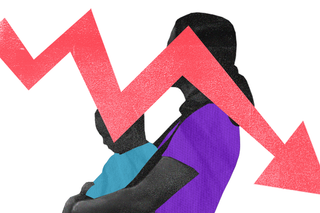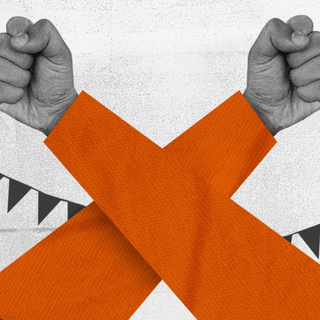
Women’s Income Drops After Childbirth, and the Pandemic May Worsen This Trend
The lockdown may lock the income imbalance in place as caregiving responsibilities fell on women.

The world’s worst kept secret is the wage penalty that comes with motherhood; the gender gap continues to remain unseen by a social conscience. Now, new research points to the enduring rigidity of this pattern: even today, women’s earnings continue to drop after childbirth.
“The gender revolution has stalled, and women remain economically vulnerable,” said sociologist Kelly Musick of Cornell University. Musick, along with Pilar Gonalons-Pons of the University of Pennsylvania and Christine Schwartz of the University of Wisconsin, Madison, looked at American couples over a period of 30 years. They analyzed the entirety of their lives via documents: detailed survey results and administrative tax records provided them with data on earnings, birth and marriage dates, and education levels.
Irrespective of the income or education levels of the partners, the woman’s salary always trickled downwards after having a child. The research was published in Population and Development Review last month. What’s worrying is how this pattern may play out during the pandemic. “The pandemic puts into sharp relief the pitfalls of our fend-for-yourself approach to managing work and family,” Musick said. These findings are but universally applicable; there is ample research on the prevalence of the motherhood wage penalty in both economically wealthy and weaker sections of the society.
As women aspire to restart their work lives, the wage penalties may be more grinding in the backdrop of a pandemic that solidified unequalgender roles. “The Covid19 pandemic may lock the income imbalance in place as mothers who pulled back to care for children face worse hiring prospects…” the researchers noted.
Researchers have also argued the gender wage gap continues to exist mostly as a penalty for bearing children. Why is there a penalty for motherhood in the first place, you ask? “That’s the holy grail question,” said Henrik Kleven, an economist at Princeton University, who has conducted research around the gender wage gap.
Motherhood casts women into a perpetual caregiving role; women’s earnings then fall steeply and never fully recover. At the same time, research has shown that men’s earnings remain largely unaffected post-parenthood. The motherhood wage penalty, in some cases, is ascribed to women’s “choice” of working less. Authors of this study, for instance, argued that “because mothers choose to work fewer hours, or in lower-paid but more child-friendly jobs, or not at all when their children are very young,” they continue to shoulder the disproportionate impact of gender norms.
Related on The Swaddle:
Respectfully Disagree: Does Motherhood Hurt Women’s Careers?
But there is very little choice and agency for women operating in the workspace. “It’s not a choice if you are the only parent who is able to take leave immediately after having a baby,” Liesl Goecker noted in The Swaddle. “In countries like India, with its six months of maternity leave but no commensurate mandate for paternity leave, women have no choice but to sacrifice earnings in order to care for children. This sets them on the path for lower lifetime earnings, making them more likely to be financially dependent on a partner, and their work and income more disposable should the needs of home increase — creating a vicious cycle of low earnings and financial dependency.” Studies as early as 2008 show how “women [who score in the upper third on a standardized test] have a net 8% reduction in pay during the first five years after giving birth.”
Financial dependency is the product of multiple loopholes. Most countries have no mandated paid leave policy after childbirth (for both parents); there is no system of affordable and accessible child care. As Goecker mentioned, caregiving responsibilities fall on mothers as their work and income are deprioritized.
During the pandemic, a series of cultural stigmas aligned to weaken women’s standing in the workforce. Both paid and unpaid work was devalued; logistical gaps (such as no transportation) made it harder for them to travel for work or study; increased caregiving responsibilities at home further confined them indoors. In a U.S. survey from May and June, one out of four women became unemployed during the pandemic due to a lack of childcare during the pandemic. Even in India, the worry is that the pandemic will lock women — specially engaged in farm and factory labor and domestic help — out of the workforce. “Whatever social and economic gains Indian women had made in the last decade, it has been largely wiped out during the Covid19 period,” said Amarjeet Kaur, general secretary of the All India Trade Union Congress.
It pushes forth a radical reassessment of how we view motherhood. The childcare conundrum must scrutinize the social welfare schemes, not the mothers. A 2020 study argued for a promising way to close the gap, positioning high-quality child care from a social welfare lens. “It has a huge impact,” said Emily Nix, assistant professor of finance and business economics at the USC Marshall School of Business. “It reduces the child penalty by 25% during the years of treatment. It’s not going to totally close the gap, but I would argue that 25% is much better than zero. It’s slow and steady, but it’s progress.”
Arguably, the crisis has been years in the making; the wage penalty has been applied callously for decades. The pandemic must be a trigger to renew the conversation about building an infrastructure of care — one centered on empathy and inclusion. It is no wonder that many women prioritize diversity, inclusivity, and well-being when asked what they want from the workspace.
The needs of working women were first denied, then deprioritized, and now ignored. How we react at this moment will shape gender inequalities in work and family in the decades to come.
Saumya Kalia is an Associate Editor at The Swaddle. Her journalism and writing explore issues of social justice, digital sub-cultures, media ecosystem, literature, and memory as they cut across socio-cultural periods. You can reach her at @Saumya_Kalia.
Related


What Happens to Right to Housing When We Call People ‘Encroachers’
